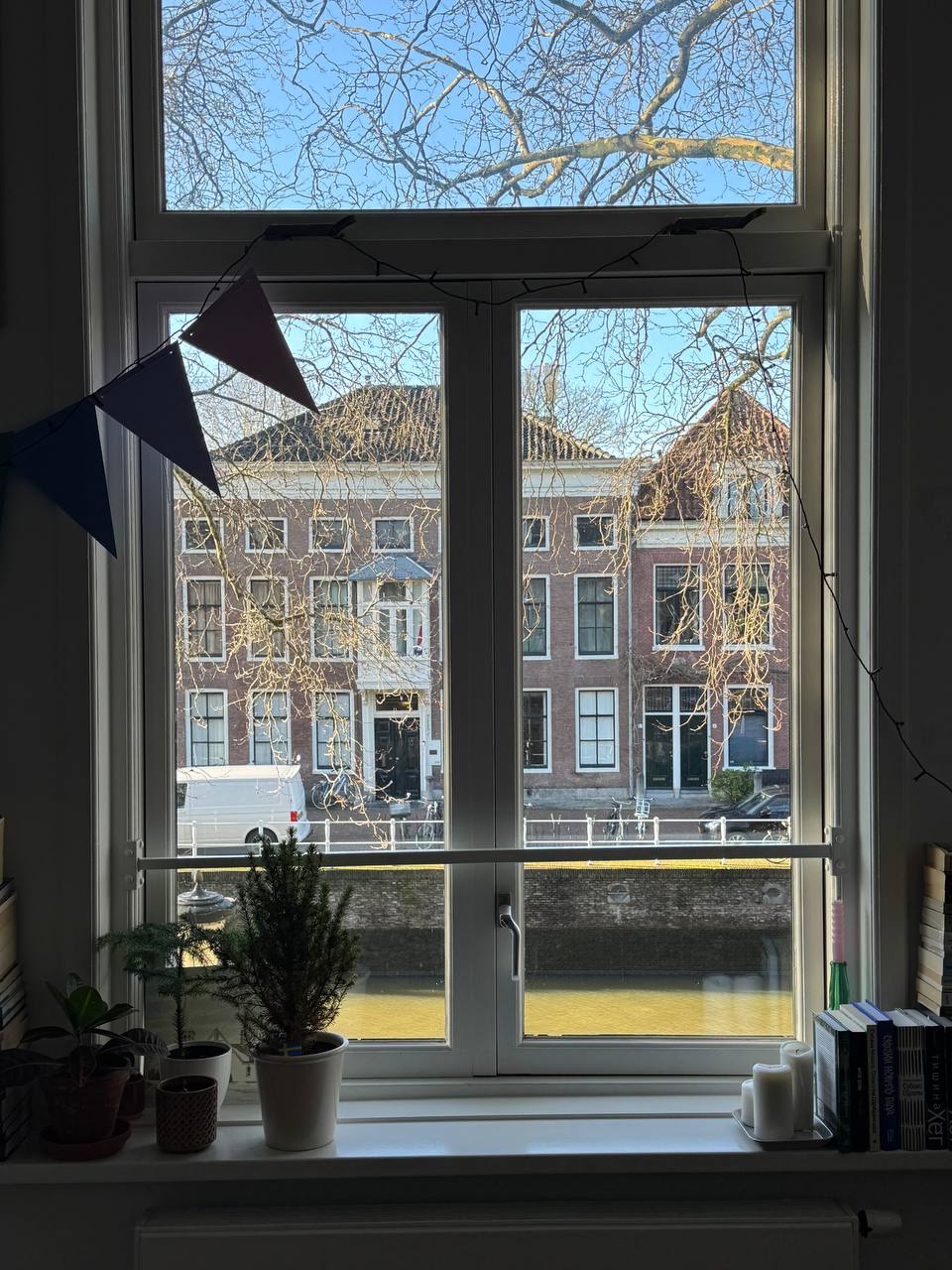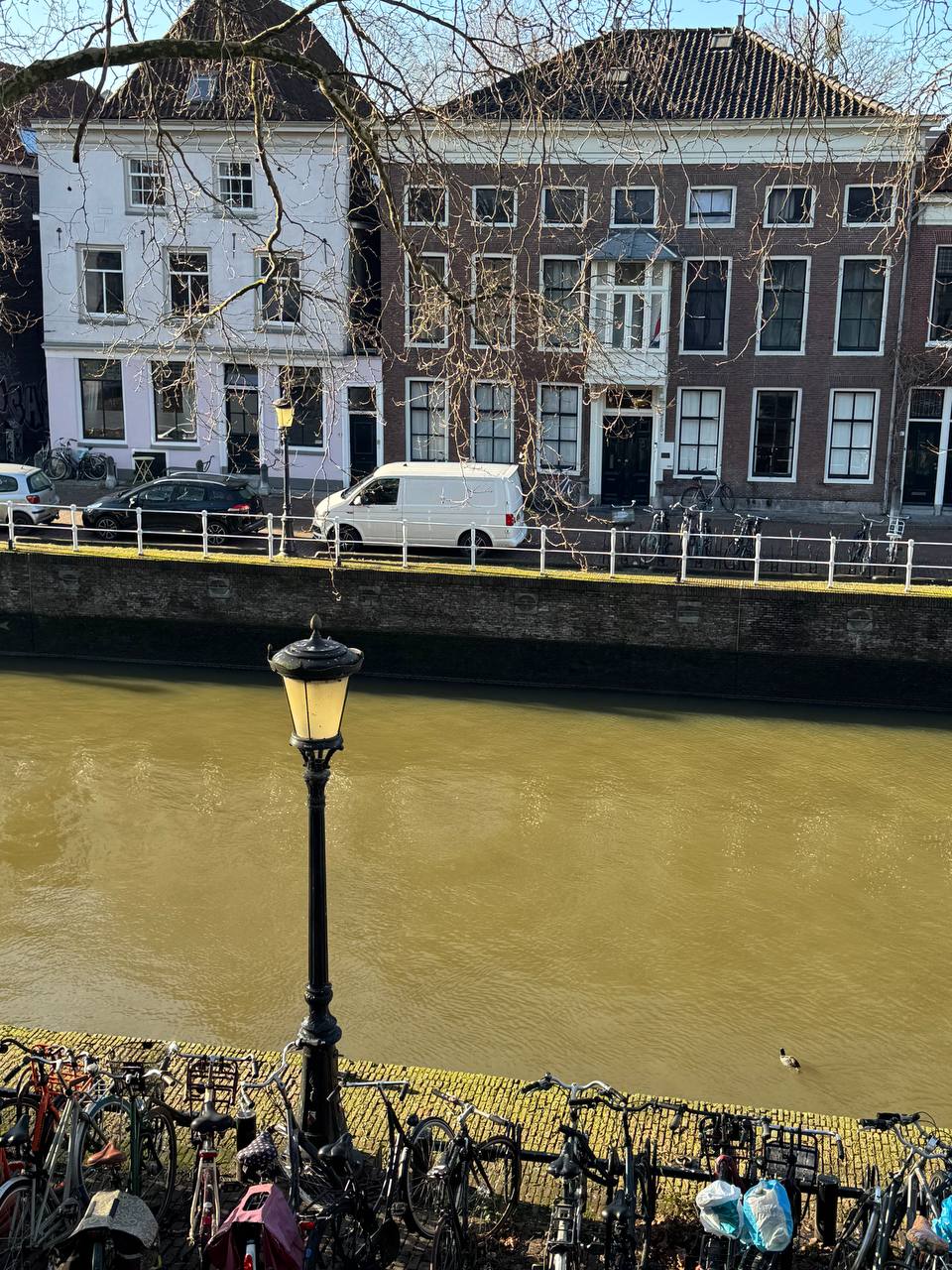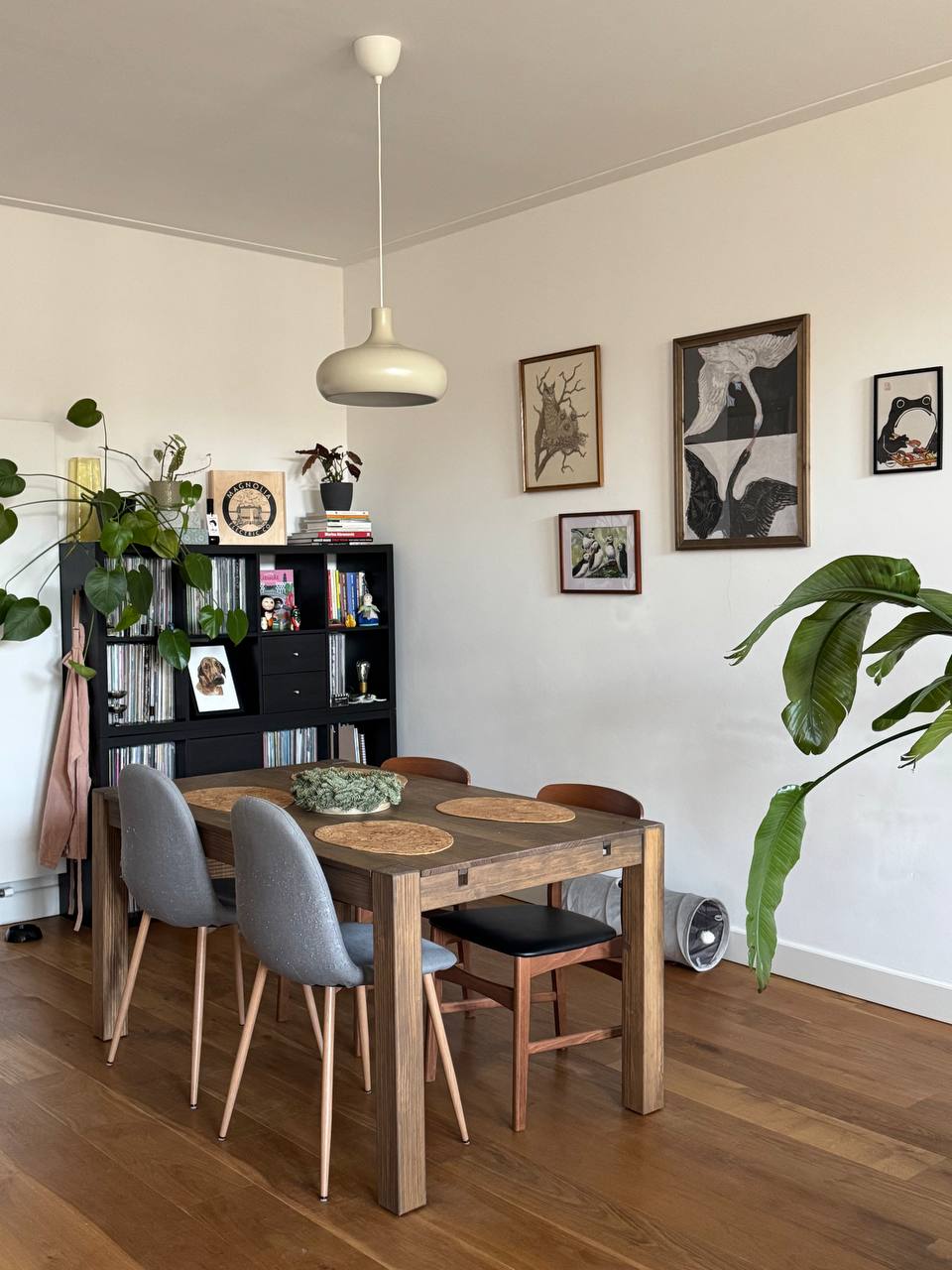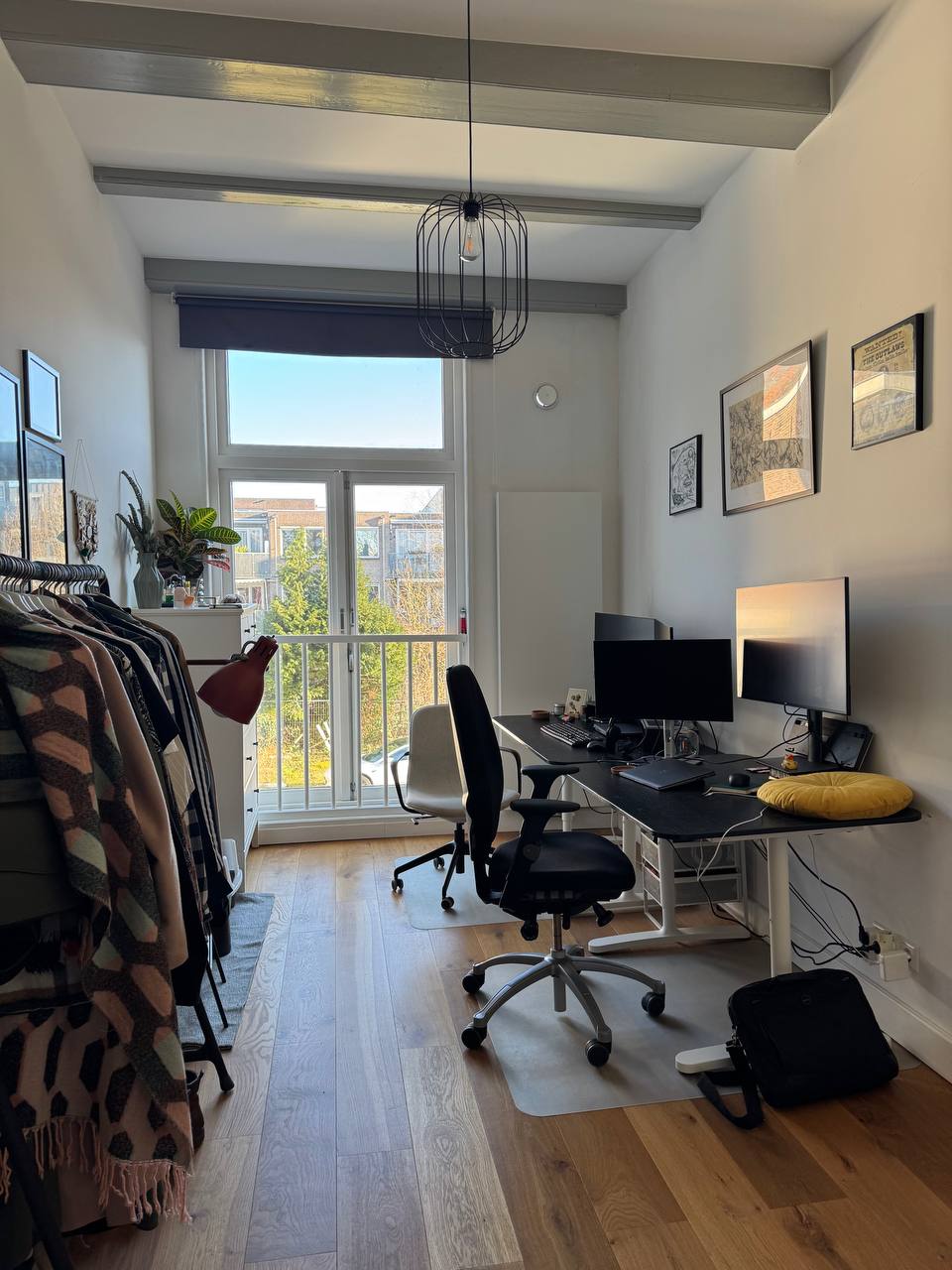Karina has been living in the Netherlands for 7.5 years. Originally from Belarus, she relocated first to Russia and later on to the Netherlands to continue her university studies. She is currently working in the sustainability industry, where she creates online courses on corporate sustainability reporting. Karina lives in Utrecht – and today she is sharing more details about her apartment and neighborhood.

Initially, I came to the Netherlands to get my Master’s degree. I found a great academic program that brought me here. When you graduate from a Dutch university as a non-EU citizen, you can get an orientation year visa, which allows you to stay in the country for one year after your studies to find a job. That was yet another reason to go specifically to the Netherlands – finding a job as a fresh graduate without any European work experience would be challenging without having such a buffer period.
For the first 4 years I lived in Amsterdam. It’s a common comparison that Utrecht is like the city center of Amsterdam, but without the tourists – and it’s quite true. It’s a historic city with charming red brick houses, all well-preserved. I was lucky enough to be impressed by its main landmark, the Dom Tower, before it went into restoration shortly after I arrived. It only reopened in November 2024.
I’d say that Utrecht has everything you need. The city center is quite small, so you can easily explore it on foot. It has almost all the same shops as Amsterdam, so you don’t need to go elsewhere for everyday essentials. If you enjoy outdoors, there’s a nature reserve right next to the city, along with numerous museums and other attractions. There are always plenty of activities, and if you want to explore further, Utrecht Centraal train station connects you to the rest of the country and beyond.

Choosing My Neighborhood
We have been living in this apartment for a bit more than 3 years, since September 2021. My boyfriend used to live in the same neighborhood where we are living at the moment, so Vogelenbuurt and the surrounding areas of Tuinwijk and Lauwerecht were our top choices. I really like these districts. Other options included Wittevrouwen, Rivierenwijk, and generally any area in the city center.
Here are my top 5 factors when deciding about the neighborhood:
· Close to the city center
· Nearby grocery stores
· Nice surroundings with cafés and other spots, so there’s no need to go to the busy city center
· Clean streets
· Quiet
My neighborhood basically meets all the factors mentioned above – the only disadvantage is the price of renting or buying a property, as it is relatively high. Besides, it’s well connected: there are lots of buses to different parts of the city and the suburbs, and the train station is also within walking distance. Of course, given that everyone uses bikes, transportation is never an issue.

I want to share some of my favorite coffee places and restaurants with you: Rocking chair and The Village Coffee & Music, Het Muzieklokaal Café. Apart from that, I’d recommend trying out all the food places around Voorstraat or going to Ekko, a concert club. At the weekend, I enjoy going to Griftpark for a walk and seeing all animals at a mini-farm there.
Within the local community, you can find various activities to join as an expat. I'm part of a local book club, and I am researching volunteer opportunities available for my current Dutch language level.
Choosing My Apartment
To begin with, finding an apartment isn’t easy. All these charming houses in the city center are quite popular. Many people want to rent or buy them, from students to expats, so each year it’s getting even harder to find something. Another issue is the price: due to high demand and the general increase in prices, apartments are becoming more and more expensive.
On top of that, for most apartments, you need to earn 2 to 3 times the rent. A landlord will pay attention to your current situation: you have to show that you are stably employed, ideally with a permanent work contract. Speaking Dutch isn’t a must, but it never hurts. By the way, an interesting fact: if you have a dog, you need to pay an extra tax (which isn’t the case in Amsterdam, but is common practice in many other Dutch cities).
As for online platforms, I’ve only used Pararius for my research. I sent the same message to each apartment’s owner, introducing ourselves as a couple looking to rent, and including details about our monthly income. My previous experience of renting in Amsterdam also helped me.

Overall, the process went pretty fast – I’d say it took us about a month. I first saw the apartment in the beginning of August, then went to a viewing a week later. I agreed to take the apartment during the viewing and sent all the documents to the landlord on the same day. The following week, we signed the contract and got the keys. It’s also important to note that the apartment we rented didn’t include any furniture. So, all things done, we moved in September.
We didn’t face any additional costs, only a two months deposit, which is typical for the Netherlands. For the vast majority of apartments, you pay for utilities separately. As a renter, you can choose the providers yourself – from electricity and gas to Internet.
Given the size of the apartment (almost 90 square meters), high ceilings, and its location, the apartment was reasonably priced. When we started renting, it was EUR1650, and it rises around 4%-5% every year (the price increase is a fixed percentage defined by the government). I’ve heard that people sometimes offer EUR50 – EUR100 more than the rental price as the competition, but nobody negotiates the price down.

To sum it up, I love the location and the house itself. It’s very spacious, freshly renovated, with a wonderful view of the canal and high ceilings. I also like the wooden floors and the modern-looking heaters. All our guests agree that it’s a beautiful place.
Actually, this was the first time I was the primary renter – I only rented rooms before. I was pleasantly surprised by how smooth the communication with the landlord was. Everything was efficient, and they were always happy to assist whenever any problem occurred. For example, once we had a leak in the bathroom, and they took care of everything. Another time, people from the municipality came and said we needed to add some things to the apartment, like vents in the bathroom doors, and the landlord took care of everything as well. When I rented a room in Amsterdam, I had an opposite experience – the landlord wouldn’t even agree to fix the sink that was leaking for months.
In conclusion, here are some tips I’d like to give to anyone planning to rent in Utrecht for the first time. First, make sure to avoid common mistakes. Mind to check everything: water pressure, door handles, all those little details. And second: be ready to spend a bit more than you budgeted for. However, even then it might not be the apartment that ticks off 100% of your wants. I frequently see people looking for a room in Utrecht for EUR600 per month, but those numbers are simply impossible to find nowadays. Competition is high here. It’s best if you can say ‘yes’ on the spot – that's what worked for me. Good luck!




